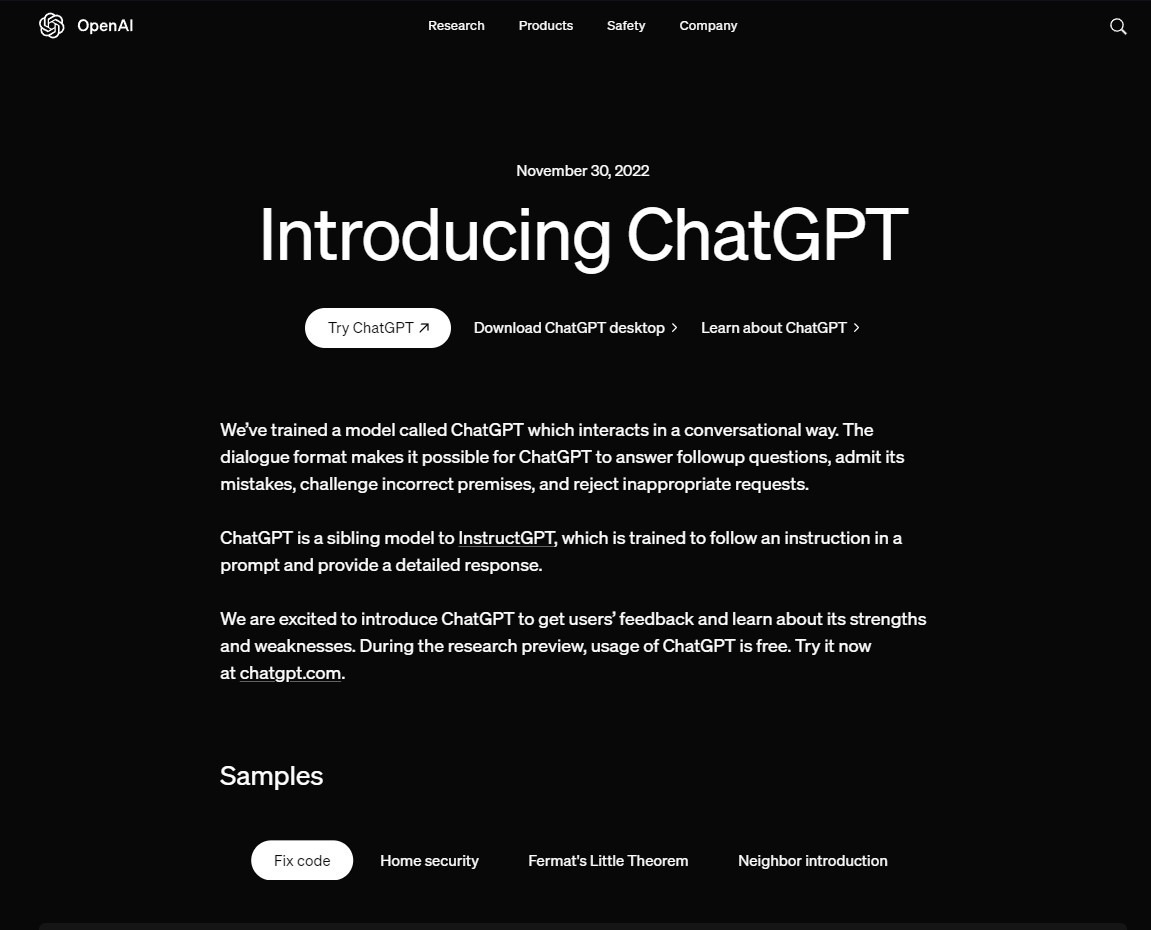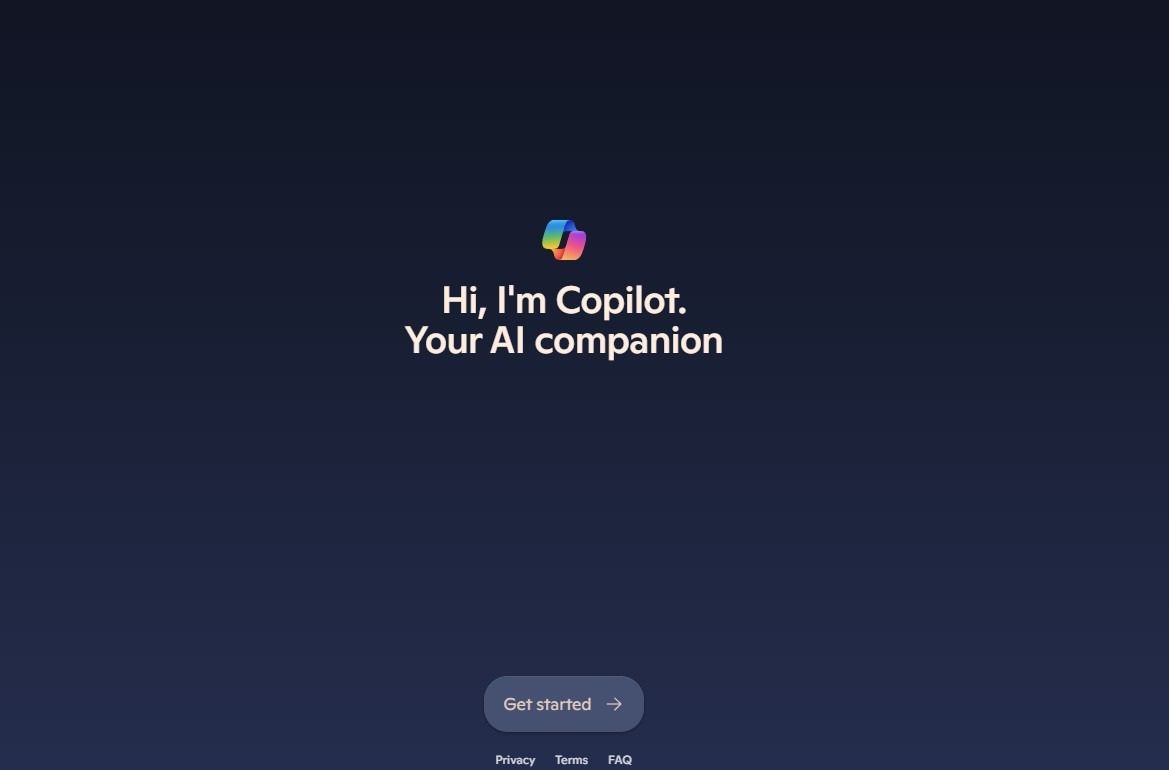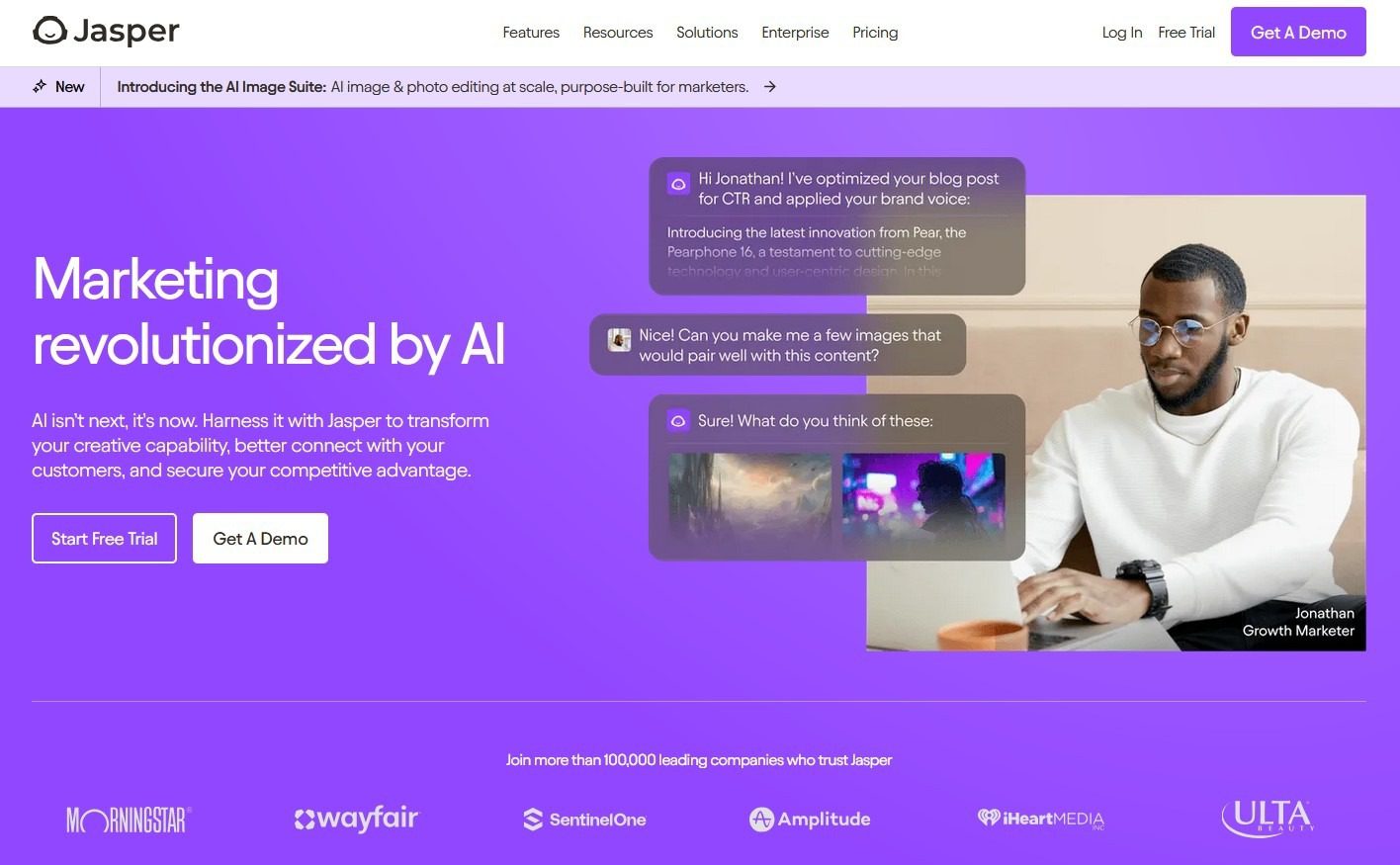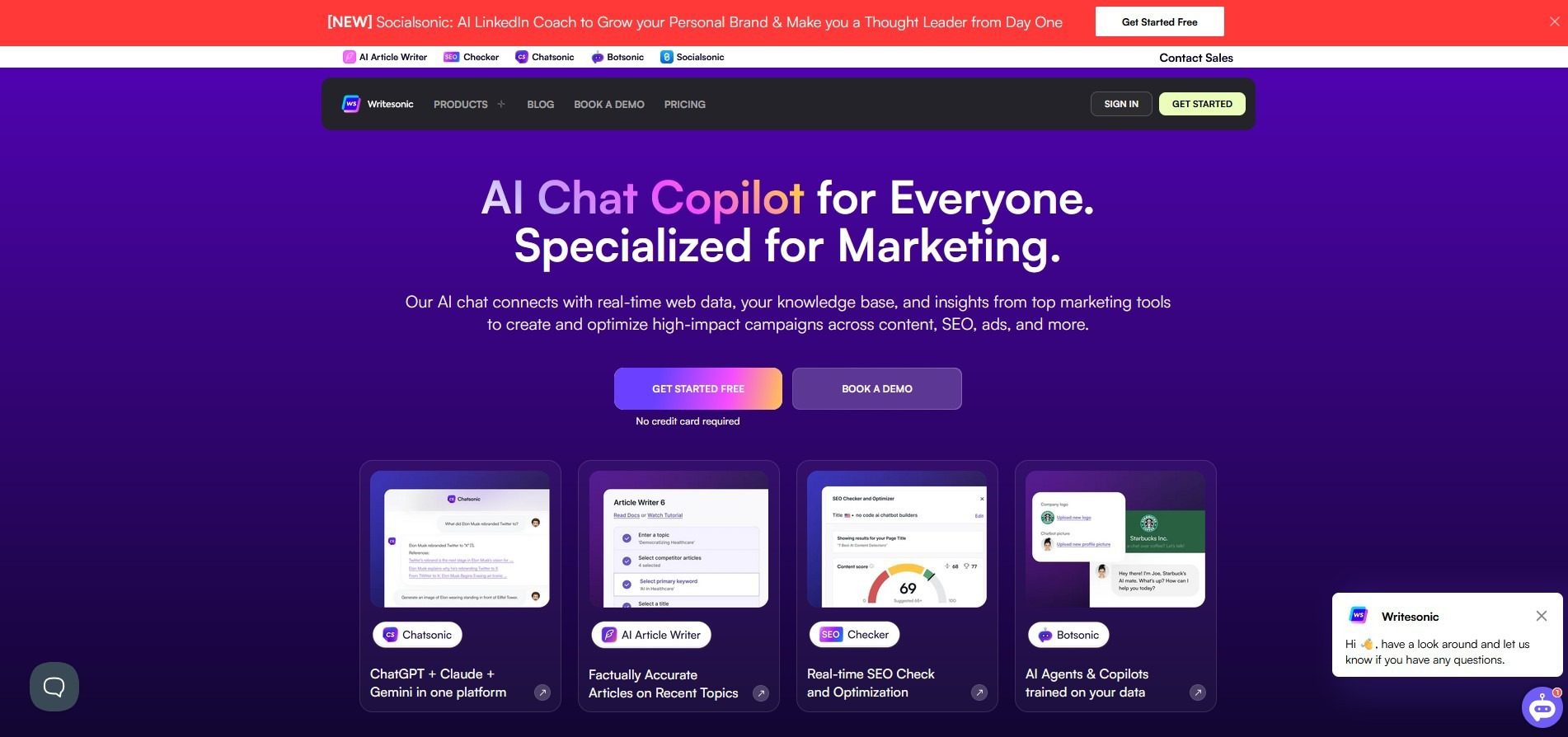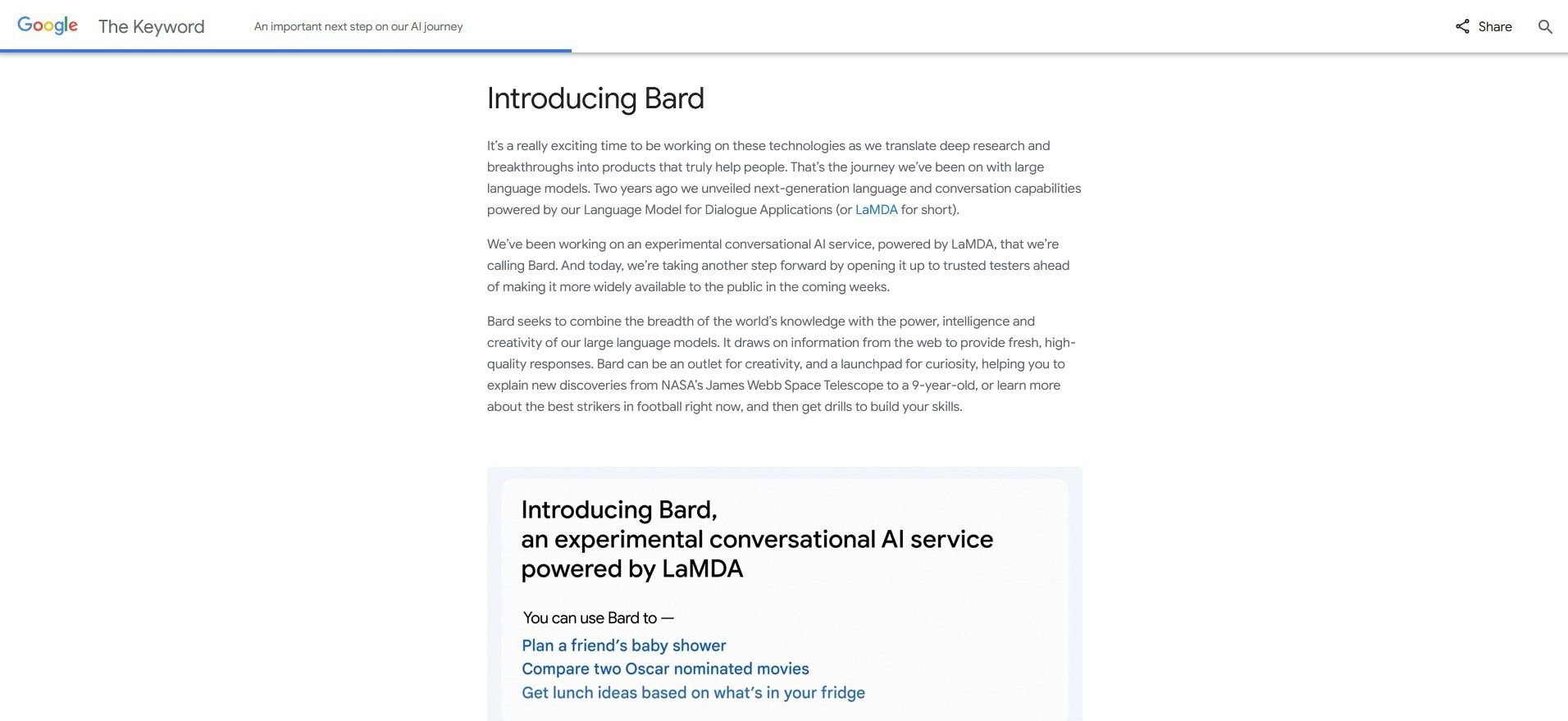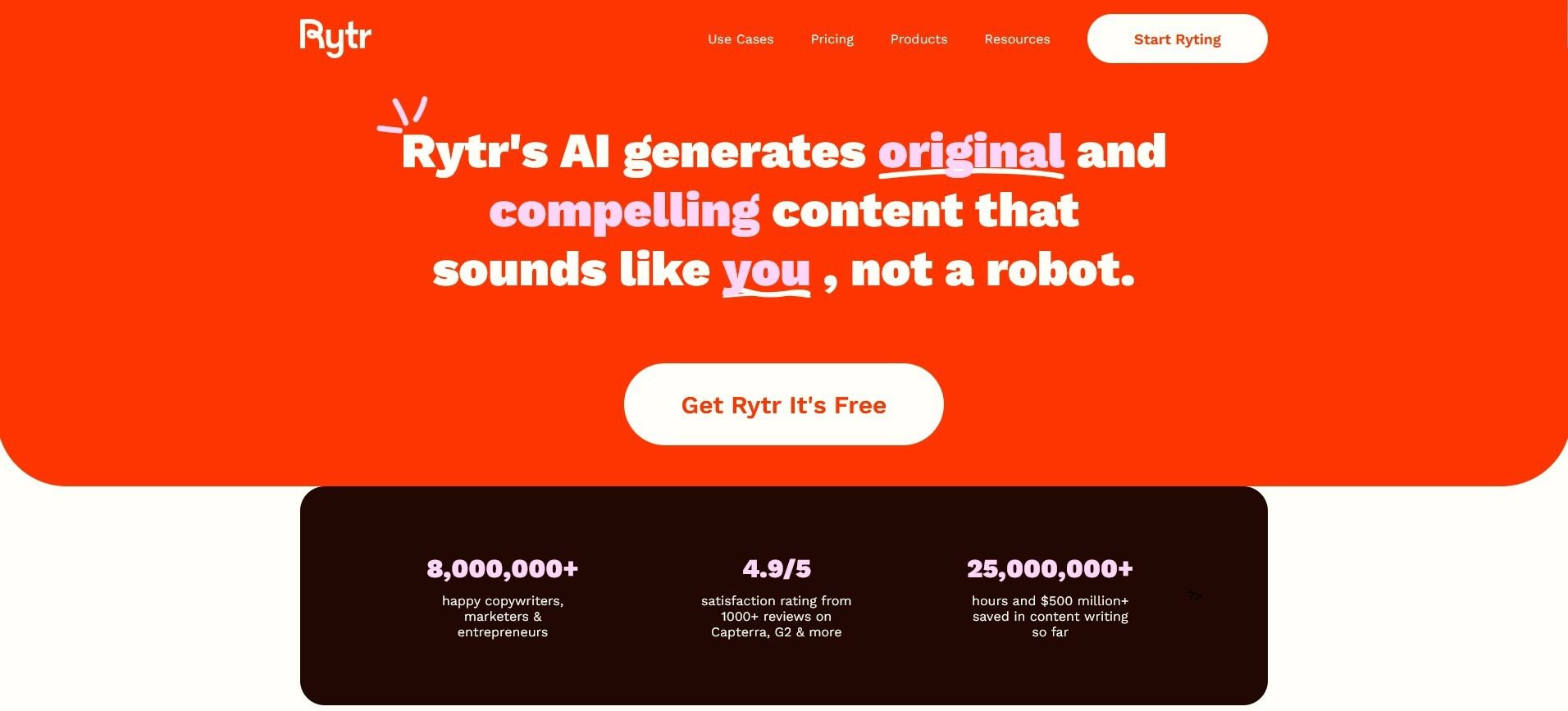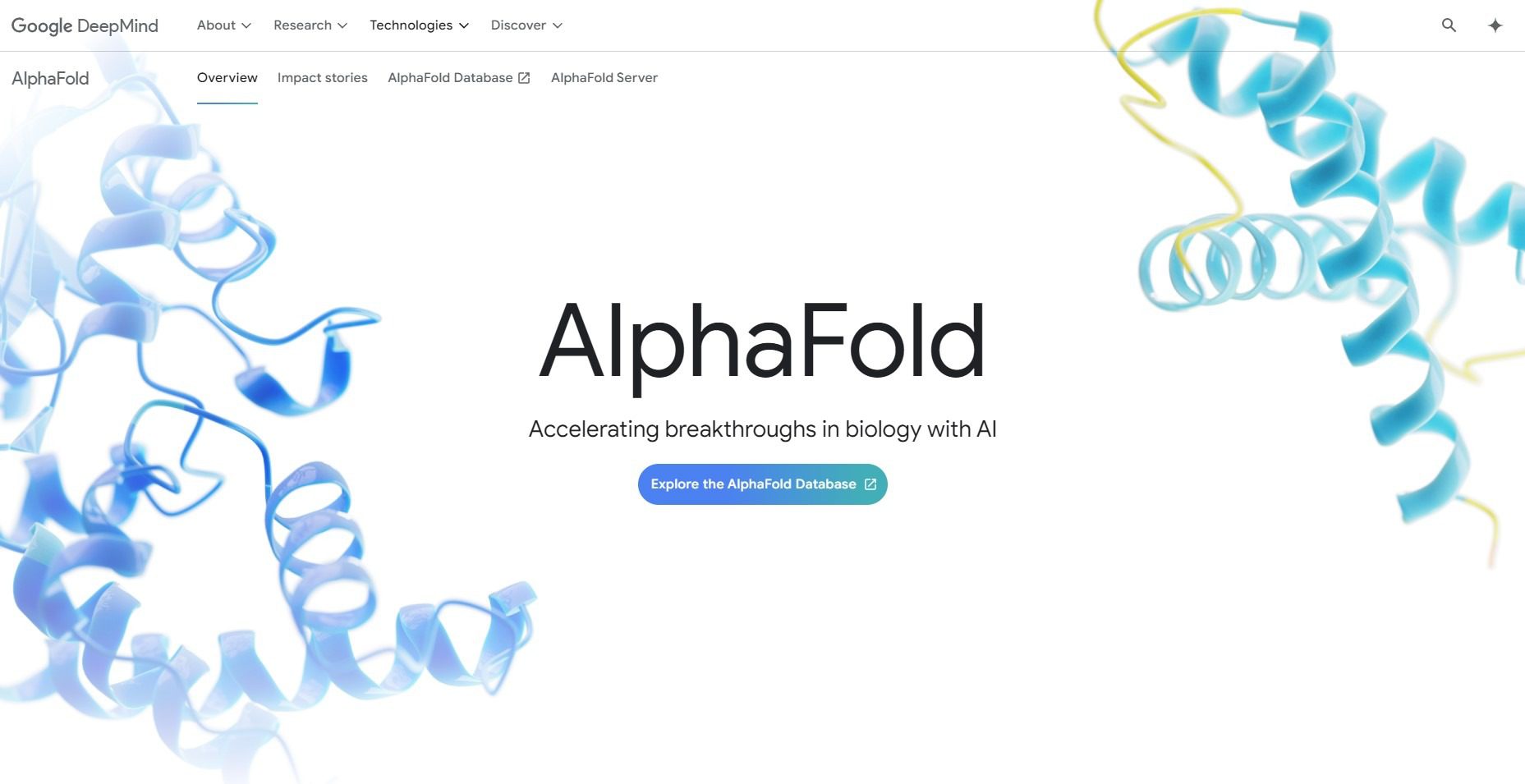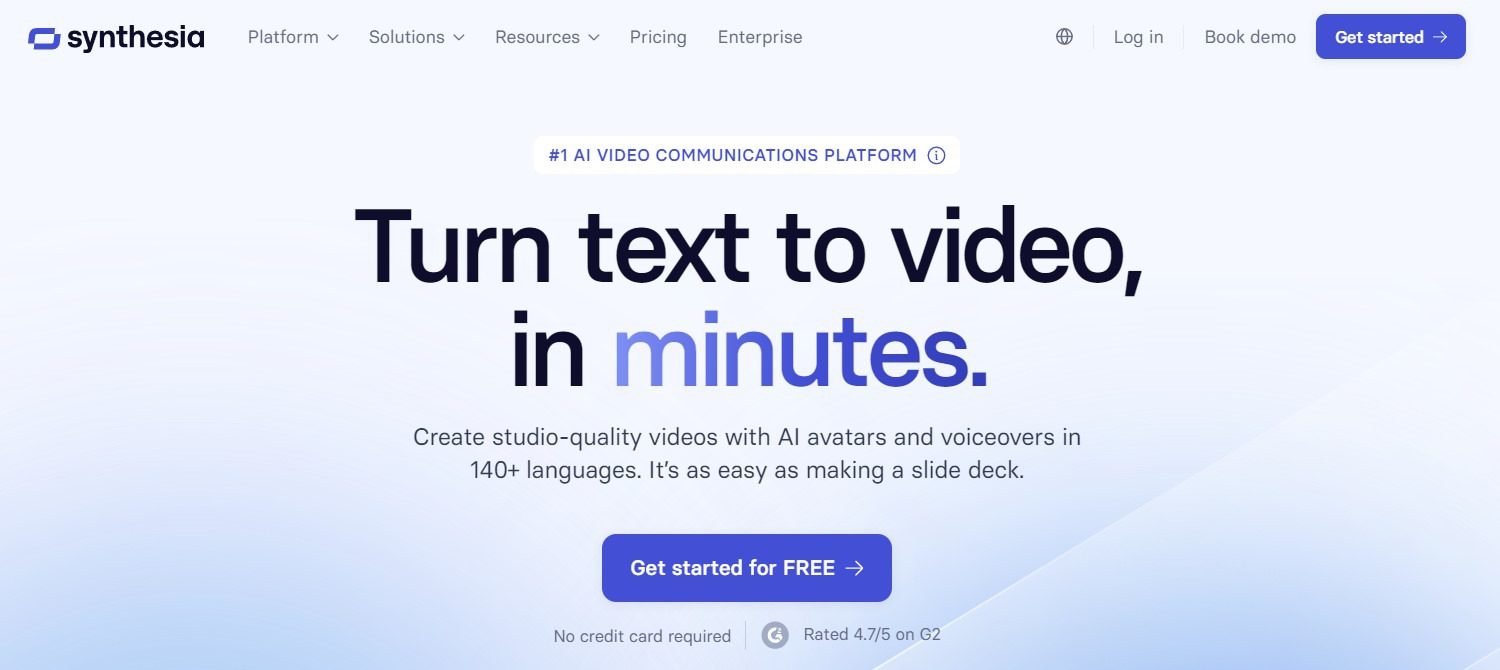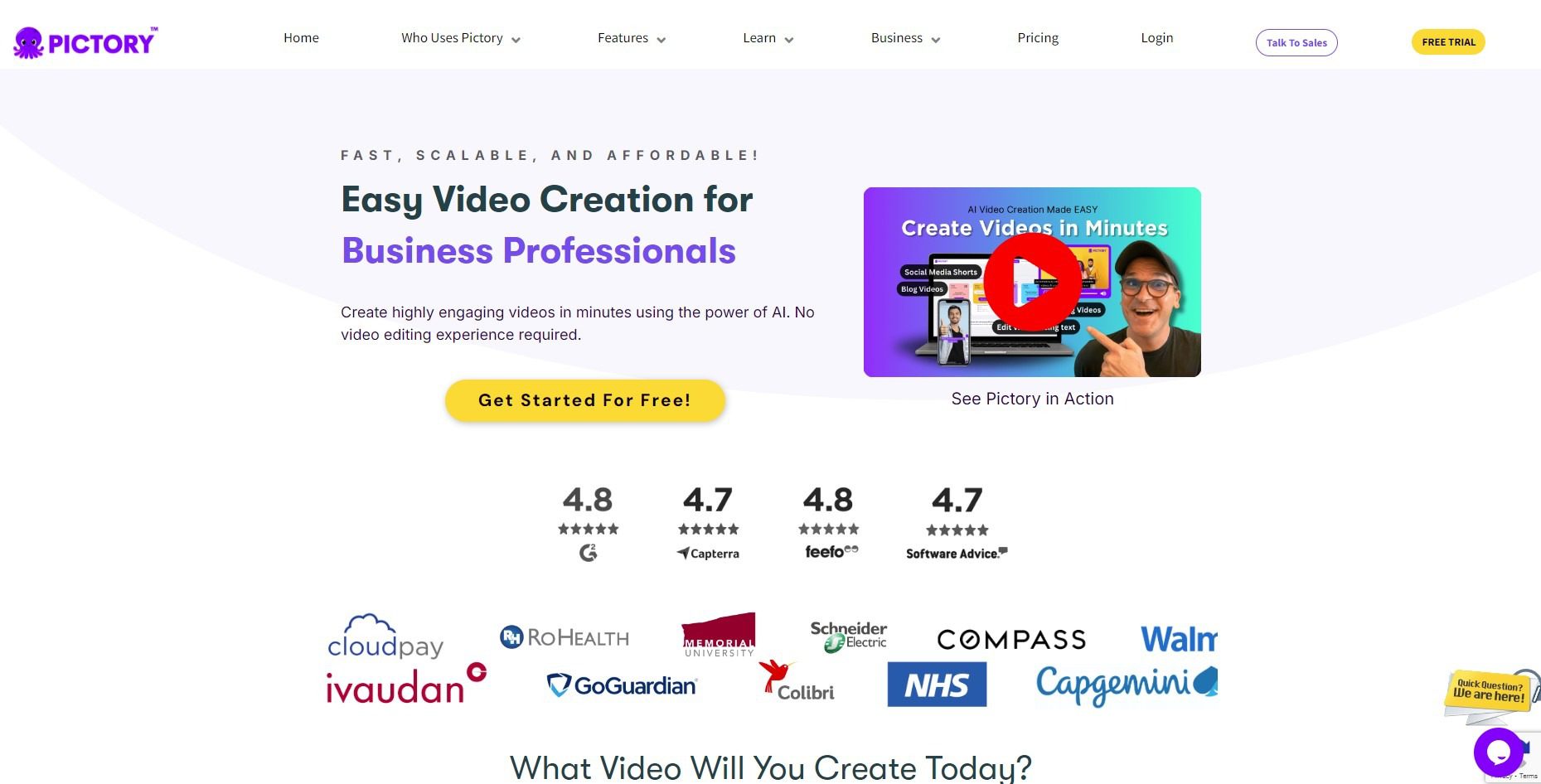This detailed comparison between ChatGPT and 11 Powerful AI Tools is a part of our AI Tools Comparison Series, which explores the best tools shaping the AI landscape.
ChatGPT vs 11 Powerful AI Tools – Introduction
Table of Contents
- 1 ChatGPT vs 11 Powerful AI Tools – Introduction
- 1.1 1. ChatGPT: Leading the Conversational AI Space
- 1.2 2. Microsoft Copilot: Enhancing Productivity in Microsoft 365
- 1.3 3. Jasper: The AI Copywriting Specialist
- 1.4 4. Perplexity AI: The Researcher’s Assistant
- 1.5 5. Writesonic: Automated Content with SEO at Its Core
- 1.6 6. Replika: AI for Emotional Support
- 1.7 7. Bard AI: Google’s Answer to Real-Time Conversational AI
- 1.8 8. Rytr: The AI Writing Assistant for Content Creation
- 1.9 9. MidJourney: AI for Creative Image Generation
- 1.10 10. DeepMind AlphaFold: Revolutionizing Biology with AI
- 1.11 11. Synthesia: AI-Driven Video Creation
- 1.12 12. Pictory: Automated Video Editing for Marketers
- 2 ❓ Frequently Asked Questions – ChatGPT vs 11 Powerful AI Tools
- 3 Conclusion – ChatGPT vs 11 Powerful AI Tools
Artificial intelligence (AI) is no longer a distant future technology; it’s part of our everyday lives. AI applications are reshaping how we work and interact with technology, from business automation and creative writing to customer support and personal companions. But with so many tools available, finding the right one for your needs can be overwhelming.
Look at how artificial intelligence has evolved, building on the foundations we’ve already seen (Discover the Evolution of Artificial Intelligence from the 19th Century).
This article, ChatGPT vs. 11 powerful AI tools, compares their key features, underlying technologies, and use cases.
Whether you’re an entrepreneur, content creator, or just curious about AI, this comprehensive guide will help you explore what each tool offers and how they differ.
The analysis of these 12 AI apps obviously cannot cover the reality of the entire field of AI applications today. Still, it illustrates the diversity and variety in today’s digital reality.
For this reason, it is conceivable, and almost certain, that many of the applications that you think are known and loved will not be included in this article.
This should not be a problem for you. I will return soon with the theory of some specific AI applications, e.g., those involving languages, science, or imaging.
So, let’s turn to the analysis in the title. Together, these 12 AI tools are revolutionizing industries and unlocking new possibilities.
1. ChatGPT: Leading the Conversational AI Space
ChatGPT, developed by OpenAI, has become synonymous with conversational AI due to its immense popularity and versatility.
Leveraging the GPT-4 architecture, this tool can answer questions, provide detailed explanations, and even engage in creative writing tasks like storytelling or script generation.
It can also handle more technical assignments, like writing code, making it a favorite among developers and tech professionals.
What sets ChatGPT apart is its capacity to maintain context over extended conversations. It’s not perfect in every scenario, but its ability to generate human-like dialogue in various tones and styles makes it highly adaptable to casual and professional environments.
Expanded Use Cases:
- Customer Support: Many companies now use ChatGPT-powered bots to offer 24/7 customer service without human intervention.
- Creative Writing: Writers, marketers, and bloggers often rely on ChatGPT to generate content ideas or even full articles.
- Technical Assistance: Programmers use ChatGPT for quick coding help, debugging, and generating boilerplate code.
Key Features:
- Contextual conversation: Maintains the flow of dialogue even in long, multi-turn conversations.
- Multi-use capabilities: From content creation to technical problem-solving.
- Customizable: OpenAI offers API integrations to tailor ChatGPT to specific business needs.
2. Microsoft Copilot: Enhancing Productivity in Microsoft 365
Microsoft Copilot has rapidly integrated itself into businesses’ day-to-day operations by embedding AI into Microsoft 365 tools like Word, Excel, PowerPoint, and Outlook.
Imagine drafting emails, creating spreadsheets, or building presentations with minimal manual input—Copilot makes that possible.
By offering real-time assistance, Copilot dramatically reduces time spent on mundane tasks. It can summarize documents, generate charts based on raw data, and even suggest improvements to writing style.
Its deep integration with the Microsoft suite makes it indispensable for businesses that rely heavily on these tools.
Expanded Use Cases:
- Data Analysis: Copilot can automate complex calculations and visualizations in Excel.
- Document Creation: From drafting proposals to summarizing reports in Word, Copilot ensures consistency and professionalism.
- Email Automation: Copilot in Outlook can draft responses, schedule meetings, and suggest priorities based on email content.
Key Features:
- Seamless integration: Works across Microsoft 365 applications to offer real-time assistance.
- Task automation: Reduces the need for manual input by automating document generation, data analysis, and content creation.
- AI-driven suggestions: Enhances productivity by providing intelligent recommendations tailored to your workflow.
3. Jasper: The AI Copywriting Specialist
Jasper, formerly known as Jarvis, is an AI tool for creating content. It’s particularly popular with marketers, bloggers, and content creators because it offers a wide array of content templates that cater to various needs.
Whether writing a blog post, drafting social media captions, or creating email marketing sequences, Jasper helps you do it efficiently and effectively.
Unlike some AI tools that require extensive tweaking, Jasper is designed for ease of use. It offers preset templates for everything from product descriptions to ad copy, allowing users to generate polished content quickly.
Jasper is also well-known for generating SEO-optimized content, which is ideal for digital marketing strategies.
Expanded Use Cases:
- Content Marketing: Businesses use Jasper to generate blog posts, landing pages, and ad copy to drive engagement.
- Email Campaigns: Jasper automates email sequence creation for more personalized customer outreach.
- Social Media: It’s used to craft compelling social media updates that resonate with followers.
Key Features:
- Pre-built templates: Choose from formats tailored to specific content types like blogs, social media, and ads.
- SEO tools: Helps create search engine-friendly content to improve rankings.
- Tone customization: Adjusts tone and style based on audience and platform requirements.
4. Perplexity AI: The Researcher’s Assistant
Perplexity AI stands out for its fact-based approach to AI responses. Unlike conversational AIs that generate answers based on existing knowledge databases,
Perplexity actively pulls real-time information from reputable sources, providing references and citations. This makes it an ideal tool for academic researchers, journalists, or professionals who require accurate and up-to-date information.
While tools like ChatGPT are excellent for creative dialogue and brainstorming, Perplexity excels in research-oriented tasks, where factual accuracy and source credibility are critical.
Its ability to deliver citations with each response is a feature highly valued by those working in law, healthcare, or any field where the accuracy of information can have significant consequences.
Expanded Use Cases:
- Academic Research: Provides fact-based responses complete with source citations for use in academic papers or reports.
- Legal Research: Lawyers and legal researchers can use Perplexity to get credible answers to complex legal questions.
- Healthcare Queries: Health professionals rely on Perplexity to provide up-to-date medical information, especially in fast-evolving fields like pharmaceuticals.
Key Features:
- Fact-based answers: Provides real-time, research-backed responses with citations.
- Source transparency: Every answer is linked to credible sources for verification.
- Research focus: Ideal for professionals in fields that demand factual accuracy.
5. Writesonic: Automated Content with SEO at Its Core
Like Jasper, Writesonic is designed for content creators who need fast, automated text generation.
The key differentiator is Writesonic’s emphasis on SEO, which helps users create blog posts and marketing copy optimized for search engine rankings.
Focusing on speed and efficiency, Writesonic is perfect for marketers who need to produce large volumes of content quickly. It offers various templates, from blog introductions to full articles, making it easy to go from idea to execution in minutes.
Whether writing a product description or creating an entire eBook, Writesonic’s AI can handle the task.
Expanded Use Cases:
- Blog Post Automation: Writers and bloggers use Writesonic to draft long-form content faster without sacrificing quality.
- Product Descriptions: E-commerce companies automate product descriptions, ensuring consistency and SEO optimization.
- Ad Copywriting: Marketing teams use Writesonic to generate compelling ad copy that drives conversions.
Key Features:
- SEO-driven content: Tailored to help users generate high-ranking articles and marketing copy.
- Content variety: Handles a wide range of content types, from short ad copy to long-form blog posts.
- Fast content generation: Allows users to produce high-quality content at scale quickly.
6. Replika: AI for Emotional Support
Unlike most AI tools designed for productivity, Replika is an AI designed to provide emotional support. It functions as a virtual friend or companion, learning from the user’s preferences and moods to deliver personalized conversations.
Its primary use is for people seeking companionship or emotional help.
Replika stands out because it provides engaging, casual, emotionally responsive dialogue. It can discuss everything from day-to-day events to deeper emotional topics, offering comfort and tracking the user’s mood over time.
Though it’s not a substitute for professional mental health care, many users find Replika to be a helpful companion.
Expanded Use Cases:
- Companionship: People seeking a virtual friend for casual conversation and emotional support turn to Replika.
- Mental Health: Though not a licensed therapist, Replika can help users track their emotions and manage stress.
- Language Practice: Some users use Replika to practice conversational language skills in a low-pressure environment.
Key Features:
- Emotional intelligence: Learns and adapts to the user’s emotional state over time.
- Personalized conversation: Offers tailored dialogue based on the user’s preferences.
- Voice chat: Allows users to engage through both text and voice interactions.
7. Bard AI: Google’s Answer to Real-Time Conversational AI
Google’s Bard AI leverages the power of real-time information directly from Google Search.
This allows Bard to provide up-to-date facts, making it highly reliable for users seeking fresh, factual data. Unlike other AI tools that rely on pre-existing data, Bard taps into the world’s largest search engine to answer queries.
Bard’s integration with Google’s vast ecosystem gives it a unique edge in quick searches, fact-checking, and real-time event tracking.
It’s a conversational AI that excels in delivering current information, making it a top choice for users who prioritize real-time data over creative or technical output.
Expanded Use Cases:
- Real-time search: Pulls real-time information from Google Search, making it perfect for queries on current events and fresh data.
- Fact-checking: Reliable for researchers and writers needing up-to-date, fact-checked answers.
- Travel & Navigation: Integrates with Google Maps to provide real-time updates on routes and locations.
Key Features:
- Real-time information: Constantly updated with the latest information from Google Search.
- Google integration: Seamlessly works with other Google services like Maps and Search.
- Dynamic responses: Tailored, fact-driven responses based on user inquiries.
8. Rytr: The AI Writing Assistant for Content Creation
Rytr is an AI-driven writing assistant tailored for bloggers, marketers, and social media managers who need help generating high-quality content quickly.
One of its standout features is the variety of tone options available, from casual to formal, allowing users to craft content suitable for different audiences and platforms.
Rytr is particularly adept at producing short-form content such as social media posts, product descriptions, and email sequences.
It also offers more control over the tone and style of writing than some other AI tools, making it a good choice for businesses and professionals who need tailored content.
Expanded Use Cases:
- Social Media: Perfect for generating captions, tweets, and short-form posts optimized for engagement.
- Copywriting: Creates ad copy, product descriptions, and marketing emails tailored to specific needs.
- Blogging: Helps bloggers generate ideas and draft entire articles more efficiently.
Key Features:
- Tone customization: Adjusts writing style to match the tone required for different audiences or platforms.
- Short-form content generation: Particularly effective for creating short, punchy content for marketing.
- Multi-language support: Offers content generation in multiple languages, making it useful for global marketing.
9. MidJourney: AI for Creative Image Generation
While most AI tools focus on text generation, MidJourney breaks the mold by delivering stunning visuals created through AI.
Ideal for artists, designers, and marketers, MidJourney uses deep learning algorithms to generate unique images from user prompts.
Its ability to interpret vague descriptions and transform them into artistic visuals has gained traction among creatives who want to streamline their design process.
MidJourney is perfect for those needing a quick, creative solution or inspiration without spending hours manually designing.
It’s gaining popularity for creating concept art, promotional graphics, and even fantasy or sci-fi-themed images.
Expanded Use Cases:
- Concept Art: Used by designers and game developers to create rapid prototypes and visual concepts.
- Marketing Visuals: Quickly generates marketing graphics, social media banners, and ad visuals.
- Creative Inspiration: Serves as a tool for artists looking for fresh ideas or creative blocks.
Key Features:
- Artistic image generation: Transforms text prompts into vivid, high-quality images.
- Fast prototyping: Allows designers to visualize concepts quickly.
- Customizable output: Users can fine-tune the style and elements of the generated images.
10. DeepMind AlphaFold: Revolutionizing Biology with AI
DeepMind’s AlphaFold is an AI tool revolutionizing the biological sciences by accurately predicting protein structures.
While not designed for everyday users, AlphaFold has significantly impacted drug discovery, genomics, and molecular biology.
It uses deep learning models to predict the 3D shapes of proteins, a task that has long been a challenge in biology.
For researchers and scientists, AlphaFold provides insights into how proteins function, helping develop new treatments and understand various diseases.
It’s a groundbreaking example of how AI can go beyond text generation and be applied to solve complex scientific problems.
Expanded Use Cases:
- Drug Discovery: Helps pharmaceutical companies develop new treatments by predicting protein structures.
- Disease Research: Supports medical research in understanding the mechanics of diseases at the molecular level.
- Biotechnology: Assists in creating new biotech products and solutions by providing insights into protein function.
Key Features:
- Accurate protein structure prediction: Uses deep learning to predict complex 3D protein structures.
- Scientific impact: Transforming biological and medical research with groundbreaking predictions.
- Collaboration with researchers: Collaborating with research institutions for drug discovery and disease understanding.
AlphaFold by DeepMind
11. Synthesia: AI-Driven Video Creation
Synthesia is an AI tool that automates video production by generating human-like avatars capable of delivering speeches or narrating text.
This makes it incredibly useful for businesses that need to create training videos, explainer videos, or even product demonstrations without hiring actors or video editors.
One of Synthesia’s main selling points is its ability to produce videos in multiple languages, making it highly adaptable for global businesses.
Users type in the script, choose an avatar, and Synthesia does the rest. This automation makes video creation faster, more affordable, and scalable for businesses.
Expanded Use Cases:
- Corporate Training: Companies use Synthesia to create training videos without needing a production crew.
- Marketing: Generates promotional videos, product demos, and explainer videos automatically.
- Multilingual Content: Synthesia supports multiple languages, making it ideal for companies with a global presence.
Key Features:
- AI-generated avatars: Human-like avatars narrate text in a lifelike manner.
- Language support: Generates videos in multiple languages, expanding its global appeal.
- Easy video creation: No video editing skills are required; users provide the script.
12. Pictory: Automated Video Editing for Marketers
Pictory is another AI tool designed for video creation, focusing specifically on automated video editing.
Users can input long-form content such as blogs or articles, and Pictory will automatically create engaging video summaries.
This makes it an excellent tool for content marketers looking to repurpose written content into video format.
Pictory uses AI to pull out key points from the text and match them with relevant visuals and audio, making creating short, engaging videos easy.
It’s especially useful for businesses that need to create video content quickly for platforms like YouTube, Instagram, or LinkedIn.
Expanded Use Cases:
- Content repurposing: Converts blog posts or articles into short video summaries for social media.
- Social Media Marketing: Generates videos tailored to Instagram, YouTube Shorts, and LinkedIn platforms.
- Corporate Communication: Companies use Pictory to create training or internal communication videos from existing written materials.
Key Features:
- Automated video editing: Transforms text-based content into videos automatically.
- AI-driven content selection: Extracts key points from articles and matches them with visuals and music.
- Platform-specific optimization: Creates videos optimized for various social media platforms.
❓ Frequently Asked Questions – ChatGPT vs 11 Powerful AI Tools
1. Which AI tools were compared to ChatGPT?
This article compares ChatGPT with 11 AI tools including Gemini, Claude, Perplexity, Jasper, Copilot, Replika, MidJourney, Bard, Writesonic, Pictory, and Rytr.
2. What criteria were used for comparison?
The tools were compared across features like image generation, coding, ethics, up-to-date info, creativity, and more.
3. Why did ChatGPT win overall?
ChatGPT excelled in conversational fluency, coding support, and general versatility across multiple tasks.
4. Which AI was best at image generation?
Gemini and MidJourney led in image generation, producing more creative and realistic visuals.
5. Who handled coding tasks best?
Claude outperformed due to cleaner, more concise code outputs, though ChatGPT was a close second.
6. How is ethics/reasoning evaluated?
Formulated ethical scenarios tested each model’s decision-making; ChatGPT gave the most direct responses.
7. Which tool performs best in real-time/up-to-date searches?
Perplexity and Gemini—thanks to real-time web access—excelled over ChatGPT, as supported by eWEEK data :contentReference[oaicite:1]{index=1}.
8. Are there domain-specific winners?
Yes—for image prompts MidJourney/Gemini, for marketing copy Jasper, for SEO Writesonic, etc.
9. What about pricing?
Most tools offer free tiers; premium versions range \$20–\$60/month depending on features and usage levels.
10. Is ChatGPT still evolving?
Absolutely—OpenAI continuously updates with GPT‑4o, custom GPTs, memory, etc., positioning it as top general-purpose model.
11. Can Gemini beat ChatGPT?
Gemini leads in image and search integration, but conversation and coding remain ChatGPT’s strengths.
12. Which tool is best for research?
Perplexity is best for citations and real-time info, but ChatGPT offers richer conversational context.
13. How do Claude and ChatGPT differ?
Claude tends to produce more concise creative and legal tone, while ChatGPT feels more well-rounded and versatile.
14. What are the main limitations?
ChatGPT can hallucinate; Perplexity may lack conversational depth; others vary in task-specific focus.
15. How should users choose?
Select tools based on needs: research (Perplexity), creativity (MidJourney/Jasper), coding (Claude/ChatGPT), image tasks (Gemini).
Conclusion – ChatGPT vs 11 Powerful AI Tools
AI tools like ChatGPT, Microsoft Copilot, Jasper, and others are rapidly evolving, transforming how we work and interact with technology in creative, productive, and research-driven ways.
Each tool has its own features and unique capabilities tailored to specific tasks, from content creation to scientific breakthroughs.
Whether you’re looking to automate marketing tasks or explore the depths of molecular biology, there’s an AI tool designed for your needs.
These 12 tools—spanning fields from creative writing to protein structure prediction—demonstrate how AI is revolutionizing diverse sectors.
As AI advances, we can only expect these tools to become more sophisticated, offering even more opportunities to optimize productivity and innovation.
📚 Related Posts You May Be Interested In
- ChatGPT vs Perplexity AI – In-Depth Comparison ⬈
- ChatGPT vs Bing AI – Which One Fits You Best? ⬈
- AI Tools Comparison Series – Overview and Insights ⬈
This article is part of the Definitive Guide to Brilliant Emerging Technologies in the 21st Century ⬈.
Thanks for reading.
ℹ️ Note: Due to the ongoing development of applications and websites, the actual appearance of the websites shown may differ from the images displayed here.
The cover image was created using Leonardo AI ⬈.


